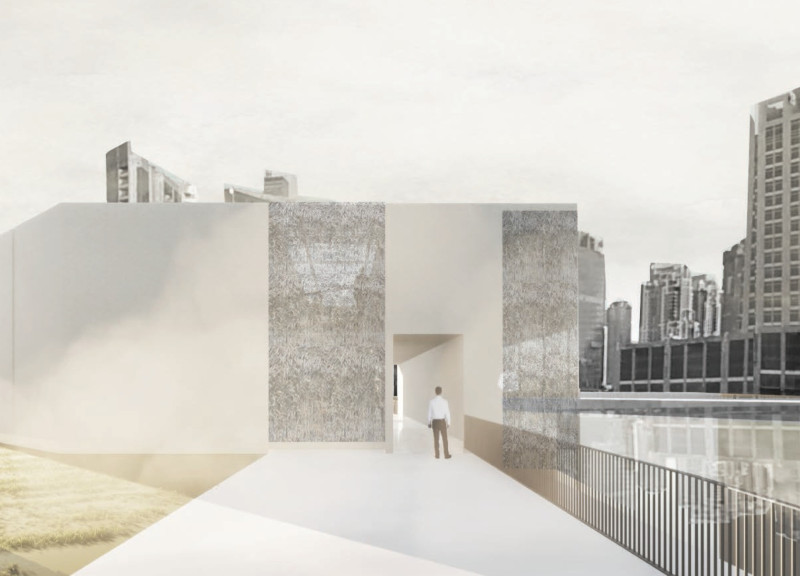5 key facts about this project
The design consists of multiple distinct areas: a gallery, a workshop and café space, and unique interactive zones, termed “Upside Down” and “Sandbox.” Each area is meticulously crafted to facilitate specific functions while remaining adaptable for varied uses. Natural light permeates the interior through strategically placed openings, enhancing the occupant experience and fostering a sense of openness. The project emphasizes the idea of connectivity, as its spatial organization encourages movement and interaction among users.
Material selection is essential to the overall design, reinforcing both functionality and aesthetic appeal. Concrete provides structural integrity and a raw aesthetic, while glass enhances the illumination and visual connection with the surroundings. Steel is employed in the framework, ensuring durability, and wood elements are introduced to create warmth and a welcoming atmosphere. This material palette supports the project's goal of harmonizing with the urban landscape while responding to the sensory needs of the occupants.
Unique Aspects of the Design Approach
What differentiates “Serendipity” from countless other architectural projects is its duality of space and philosophical integration. The design explores the relationship between ordered and chaotic environments, offering users a choice between quiet contemplation and vibrant community engagement. The incorporation of thematic spaces labeled “The Body,” “The Mind,” and “The Spirit” invites visitors to explore their personal and collective experiences within the architectural narrative.
The project's functionality extends beyond traditional utilitarian aspects, breaking conventional boundaries by allowing spaces to adapt to various activities. This flexibility enables a dynamic environment where individual users and groups can engage spontaneously, enriching the social fabric of the surrounding area.
Spatial Characteristics and Environmental Integration
The external facade of “Serendipity” reflects a minimalist contemporary approach that resonates with the surrounding urban context. It is designed to merge with the skyline while providing visual interest through its structural simplicity. Internal spaces showcase expansive views and natural light connections that enhance users' experience and facilitate a sense of connection to nature.
Landscaping plays a significant role in the project, with thoughtful planting and water features incorporated to strengthen the relationship between natural and built environments. This design element enhances user interaction with the project site, fostering an atmosphere that supports relaxation and engagement.
Explore the presentation of “Serendipity” for a detailed look at architectural plans, sections, and design elements. Understanding the architectural ideas behind this project will provide greater insight into its innovative approach and potential impact on the urban landscape.























